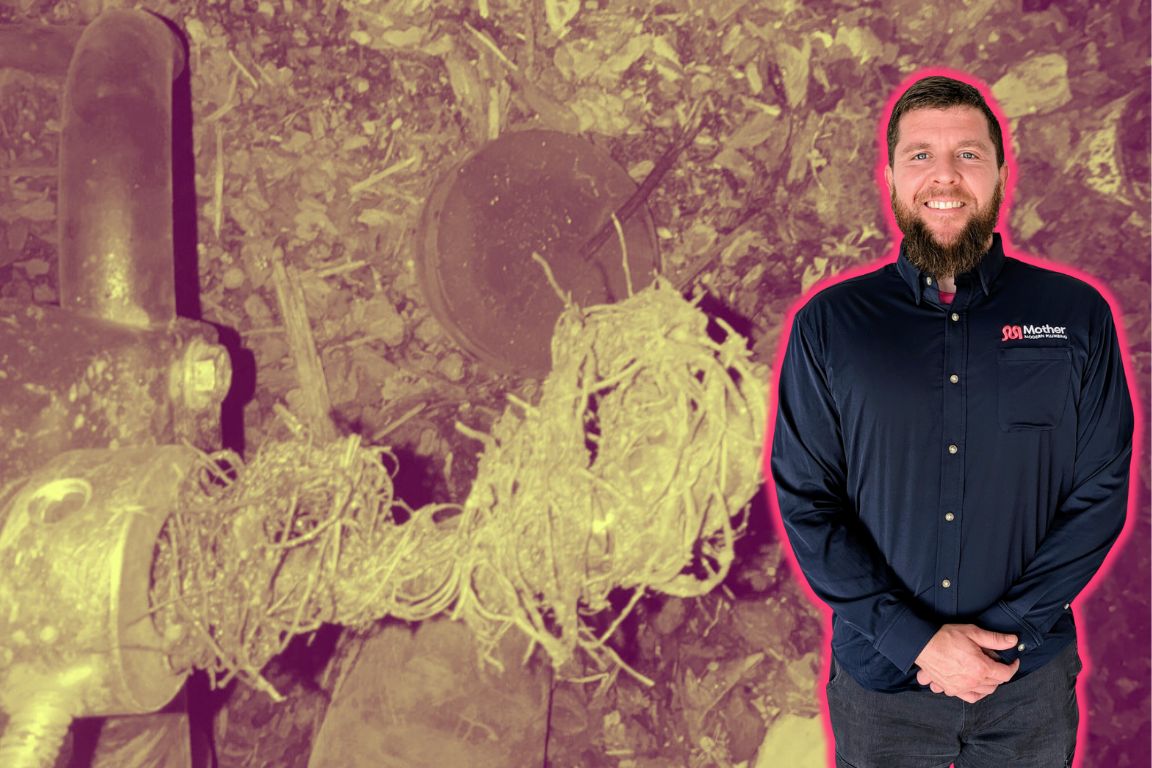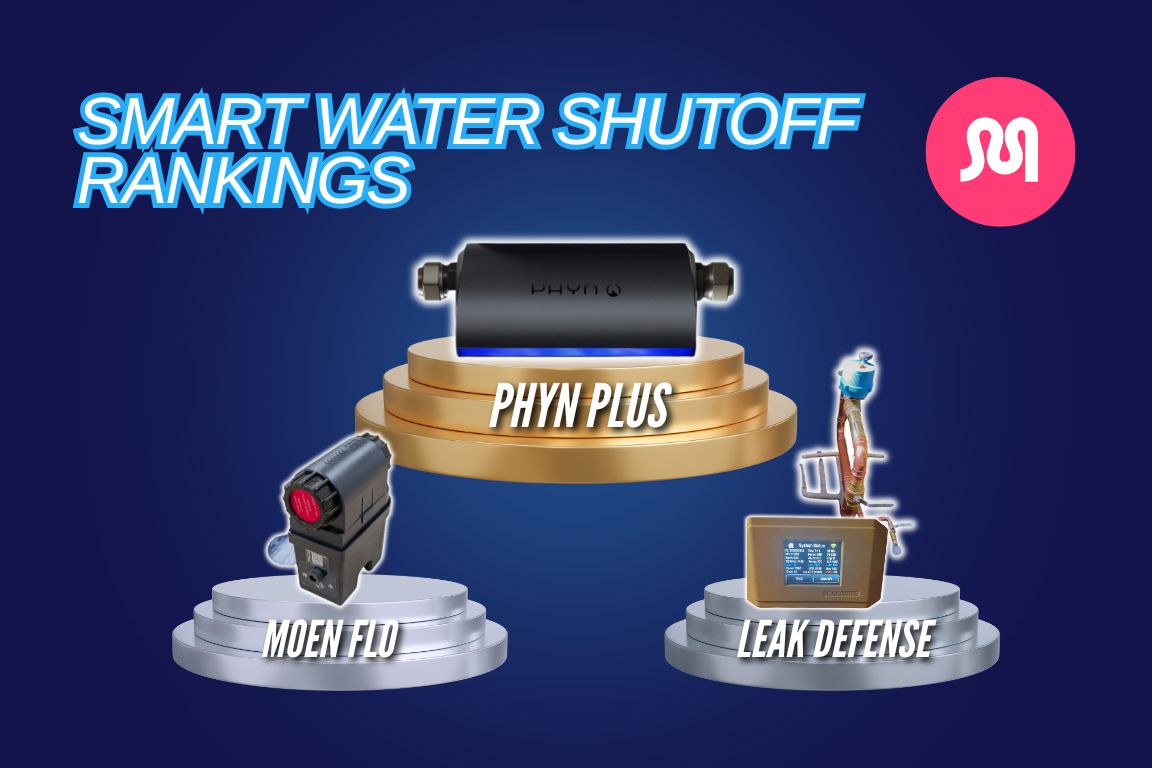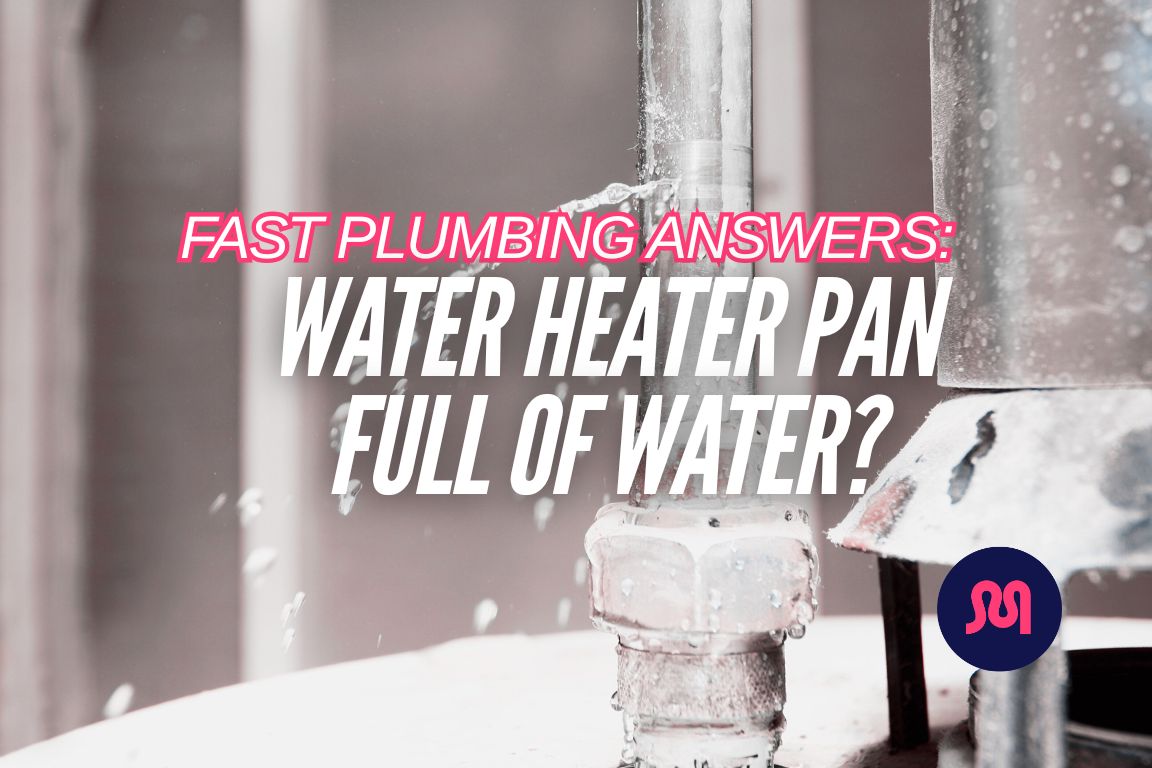Let's Cut Those Pesky Tree Roots Out of Your Sewer Line

table of contents
table of contents
You love those gorgeous, mature trees on your property. But you can’t keep their aggressive roots out of your pipes. If you’re sick of multiple intrusions, don’t cut your trees down — instead, let’s talk about how to cut tree roots out of your sewer line.
We’re Mother Modern Plumbing, a team of Dallas-Fort Worth plumbers with nearly a century of combined experience. We provide dependable, hassle-free solutions to homeowners with a focus on modern, long-lasting solutions.
Each year, we handle dozens of service calls about invasive live oak and crape myrtle tree roots penetrating sewer lines in backyards like yours. Learn how to cut those roots out of your sewer pipes, how to handle repairs, and why DIY root killers aren’t a lasting solution.
{{sewer-line-repair-and-replacement="/services/sewer-line-repair-and-replacement"}}
Tree Roots Love What’s Inside Your Sewer Line
Your home’s main sewer line has one job — get all the nasty wastewater and raw sewage out of your home and safely into the city sewer system.
The last thing you want to do is come in contact with that wastewater. Trouble is, that’s exactly what tree roots want. Your sewer pipes are full of nutrient-rich organic material that root systems crave — and they’ll bust through your pipe walls to get it.
Early warning signs of tree root intrusions include soggy, extremely green patches in your yard that won’t dry, slow drains, and a nasty wastewater smell in your backyard.
Not sure if you have roots in your sewer pipes? Before you go digging, get Fast Plumbing Answers in 2 minutes or less.
{{fast-plumbing-answers-signs-of-roots-in-pipes="/blogs/fast-plumbing-answers-signs-of-roots-in-pipes"}}
3 Types of Sewer Pipes at High Risk for Root Intrusion

Older pipe materials that are susceptible to corrosion, degradation and rust are at the highest risk for tree root intrusions. You’re likely to experience penetrations if your home’s plumbing system has any of these 3 materials:
- Cast iron sewer pipes
- Clay sewer pipes
- Orangeburg pipes
Cast iron pipes are weakened by corrosion
Cast iron pipes were heavily utilized in residential sewer pipes until the late 1970s. As they age, they’re prone to internal corrosion from wastewater flow. In clay soil-rich areas like Dallas, shifting soil conditions also cause deterioration.
All cast iron sewer pipes are at or near the end of their lifespans. This leaves them weakened and corroded enough to sustain root penetrations from mature trees.
Clay sewer pipes are easy to crack
Unlike cast iron, clay sewer pipes are great at resisting chemical damage from wastewater and sewage. But they’re extremely brittle and easily damaged by external forces.
Clay pipes are easily degraded and cracked by shifting clay soil, groundswell from rain water, and aggressive tree roots. Roots are also able to burst through clay pipes at the joints.
Orangeburg pipes were built to fail
Orangeburg was a cost-saving pipe material in the mid-20th century — and homeowners got what they paid for. These pipes are little more than paper pulp and coal tar, and they’re extremely prone to sags, bellies, deterioration and total pipe collapse.
Making matters worse: not only do tree roots love the organic material inside Orangeburg sewer pipes, they love the organic materials that Orangeburg is made of.
Ranking 3 Ways to Cut Tree Roots Out of Sewer Pipes

Most homeowners remove intrusive tree roots from their sewer lines in one of these 3 ways:
- Hydro jetting services
- Mechanical augering
- Chemical root killers
Our Master Plumbers have over 35 years of experience with tree root removal in plumbing systems. They agree that hydro jetting is the most effective method for cutting tree roots out of your sewer line.
Chemical root killers are least effective in these situations, as they don’t address the pipe damage caused by root intrusions. Sure, they’ll kill the roots — but your pipes remain susceptible to further penetrations, and the chemicals may cause further damage.
👑 Hydro jetting: the king of tree root intrusion service
How it works: Our plumbers insert a specialized nozzle into your sewer line, usually through your sewer cleanout. High-pressure water is directed from the nozzle at the affected area, blasting roots and debris out of your sewer line.
Effectiveness: Hydro jetting provides long-term, lasting solutions to tree root intrusions. The elimination of debris and buildup also facilitates better wastewater flow away from your home.
{{hydro-jetting="/services/hydro-jetting"}}
Snaking: best for smaller, single intrusions
How it works: Our plumbers insert a rotating cable through your sewer cleanout or least intrusive access point. A specialized cutting head is guided through the pipe, cutting the intrusive roots as it travels.
Effectiveness: Snaking is a good option for smaller penetrations like single root intrusions. It’s a good option for annual maintenance, especially when paired with sewer camera inspections. Extremely old pipe materials may be too degraded to handle the cutting mechanism.
Chemical root killers: more long-term harm than good
How it works: Root killers — either liquid or crystal products — are poured into your cleanout or toilet in an effort to reach the roots in your sewer line. Chemicals within these products (like copper sulfate) aim to dissolve the roots.
Effectiveness: Chemical root killers dissolve most of what they touch, but not all. They also don’t prevent roots from growing back, nor do they clear any debris from your sewer line. The chemicals in some root killer products may further damage your affected pipes.
Get current prices on all your tree root removal options in our updated service guide.
{{root-intrusion-in-sewer-line="/blogs/root-intrusion-in-sewer-line"}}
Comparing Tree Root Removal Options for Plumbing
Hydro jetting is the best service option for removing tree roots from your plumbing system. It wins virtually every comparison against snaking and chemical products, with the exception of price.
Snaking is a more affordable secondary option for less complex penetrations. Our plumbers do not recommend using chemical root killers.
TABLE: Options for Removing Tree Roots from Sewer Lines
*Call Mother for $299 drain cleaning and sewer camera inspection services.
How to Fix Sewer Lines Damaged by Root Intrusions

We successfully hydro jetted or snaked the tree roots out of your pipes. That’s a great first step — but what about the damage they left behind?
The severity and length of your damaged pipe section dictates which sewer line repair option is best for you. Let’s look at 3 potential solutions and when they’re right for you.
Spot repairs: great for single root intrusions
Spot repair is exactly what it sounds like: a targeted fix for an isolated damaged section of your sewer pipe. It's a strong, permanent patch over a single hole or crack.
A single, focused trench is created directly down to the affected area. The damaged section of pipe is cut out, and a new piece of Schedule 40 PVC pipe is installed and securely connected. Finally, the trench is backfilled.
Partial replacement: a durable fix for multiple penetrations
Partial sewer line replacement involves digging up and replacing a longer, compromised section of your sewer pipe — typically between 10 and 50 feet.
A trench is excavated along the damaged section of your pipe. The broken pipe is completely removed, and a brand new, durable Schedule 40 PVC pipe section is laid in its place. Connections are made to the existing healthy pipe on both ends, and the trench is backfilled.
The choice between spot repairs and partial replacement comes down to math: if you have a single root intrusion, choose spot repairs. If multiple root intrusions span more than 10 feet of your sewer pipe, partial replacement is your best option.
Pipe lining: a Band-Aid option with less benefits
A smaller pipe section is slipped into your affected pipe and cured in place, bonding with the interior wall of the existing sewer line.
This process (CIPP lining) is a quick fix solution — it costs less than many other repairs, but it doesn’t address the structural issues in the existing pipe. Ultimately, the damaged pipe section will need to be replaced.
In the meantime, the lined area will have a slightly smaller diameter than the rest of your sewer line. You may experience a slight reduction in wastewater flow.
Dallas homeowners: compare all your sewer repair options in our handy guide.
{{best-dallas-sewer-repair-options="/blogs/best-dallas-sewer-repair-options"}}
Call Mother for Dallas Sewer Line Root Removal That Lasts

Cutting invasive tree roots out of your sewer line is a great first step to lasting results. Deep, complex penetrations are best solved with powerful hydro jetting services. Single intrusions are usually cleared by snaking.
Once the roots are cut out, trust an experienced plumber to conduct sewer line repairs with Schedule 40 PVC. Use spot repairs to address a single intrusion, and opt for partial sewer line replacement for multiple root intrusions that extend 10 feet or more.
Dallas-Fort Worth area homeowners trust Mother Modern Plumbing for effective, expert-driven sewer line repair services. Our team offers a combined century of experience getting tree roots out of your plumbing, and peace of mind back into your home.
Call Mother 7 days a week for fast, hassle-free scheduling and transparent pricing.
{{sewer-line-repair-and-replacement="/services/sewer-line-repair-and-replacement"}}
Common Q’s about Drain & Sewer
What types of trees damage sewer pipes?
Oaks, maples, poplars and ash trees have highly aggressive root systems that seek out organic nutrients in your sewer line. Silver maples and Live oaks are among the most problematic mature trees for sewer lines.
Why do tree roots penetrate sewer lines?
Tree roots love the organic materials in your sewer lines — waste, sewage, and clogs caused by fats, oil and grease (FOG clogs). These materials make sewer lines far more appealing targets for intrusive tree roots than your water lines.




